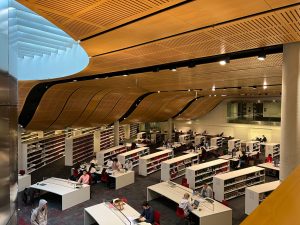Gentrification Debates Dividing Neighborhoods Nationwide
Gentrification is a hot topic in cities across the United States, with debates raging on both sides of the issue. Some see it as a necessary step towards progress and development, while others view it as a force that divides and displaces communities. As neighborhoods go through rapid changes and development, long-time residents and new newcomers alike find themselves at odds with one another. With gentrification having far-reaching effects on the social and economic makeup of neighborhoods, it’s a debate that is causing deep divisions nationwide. In this article, we’ll explore the complexities of the gentrification debate and how it is impacting communities across the country.
What is Gentrification?
Before delving into the debates surrounding gentrification, it’s important to understand what exactly it is. Simply put, gentrification is the process of renovating or improving a neighborhood, often through the influx of higher-income residents and businesses. This can lead to rising property values, higher costs of living, and ultimately the displacement of lower-income residents. While many see gentrification as a natural and positive part of urban development, there are also valid concerns about its impact on the communities it affects.
The Positive View of Gentrification
Proponents of gentrification see it as a way to revitalize struggling neighborhoods, bringing in new businesses and residents that can help spur economic growth. In many cases, these neighborhoods were previously rundown and neglected, so gentrification can bring much-needed development and investment. New businesses can provide important services and amenities, such as grocery stores and restaurants, that were lacking before. Higher property values can also benefit long-time homeowners by increasing their property wealth.
The Negative Impacts of Gentrification
On the other side of the debate, opponents of gentrification argue that it has many negative effects on the communities it displaces. One of the main concerns is the displacement of lower-income residents, who are often forced to move due to rising costs of living. This can lead to the breakup of long-standing communities, as well as a loss of important cultural and historical identity. Additionally, as wealthier residents move in, it can decrease diversity and create an unequal distribution of resources within a neighborhood.
Gentrification and Race
One of the most prominent issues surrounding gentrification is its intersection with race. Many argue that it disproportionately affects minority and low-income communities, perpetuating systemic inequalities and discrimination. In some cases, gentrification is seen as a form of cultural erasure, as new residents may not appreciate or respect the history and traditions of the neighborhood. This has led to heated debates and tensions between long-time residents and newcomers.
Solutions to Gentrification
As gentrification continues to divide neighborhoods and raise concerns about displacement, there has been a push for solutions that can benefit both sides. One approach is the implementation of affordable housing policies, which require new developments to include a certain percentage of affordable units. This can help prevent the displacement of low-income residents and maintain some level of diversity in gentrifying neighborhoods. Other solutions include community land trusts, which allow residents to maintain ownership and prevent rising property values.
The Need for Compromise
Ultimately, the solution to the gentrification debate lies in finding a compromise between the two sides. While some may argue for stronger regulations and policies to curb the negative effects of gentrification, others may see this as limiting potential growth and development. The key is to find a balance that allows for revitalization while also considering the needs and concerns of the community.
Conclusion
Gentrification is a complex issue that is dividing neighborhoods nationwide. Whether it is seen as a necessary step towards progress or a force that perpetuates inequality, there is no denying the impact it has on communities. As the debate continues, it’s important to consider all sides and work towards solutions that can benefit both the neighborhood and its residents. With proper regulation and compromise, gentrification can potentially be a positive force for change while also preserving the fabric of the communities it affects.









